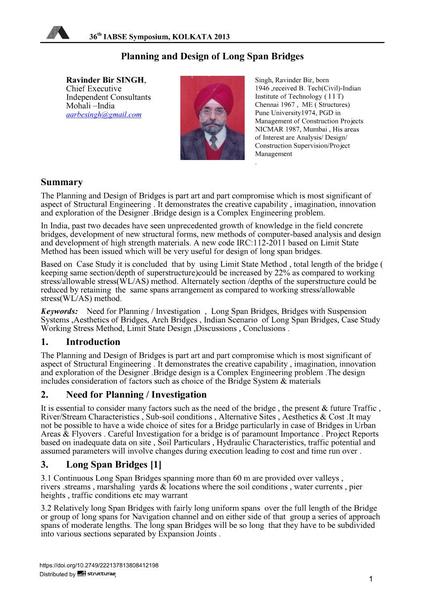Planning and Design of Long Span Bridges

|
|
|||||||||||
Détails bibliographiques
| Auteur(s): |
Ravinder Bir Singh
|
||||
|---|---|---|---|---|---|
| Médium: | papier de conférence | ||||
| Langue(s): | anglais | ||||
| Conférence: | IABSE Symposium: Long Span Bridges and Roofs - Development, Design and Implementation, Kolkata, India, 24-27 September 2013 | ||||
| Publié dans: | IABSE Symposium Kolkata 2013 | ||||
|
|||||
| Page(s): | 1-5 | ||||
| Nombre total de pages (du PDF): | 5 | ||||
| Année: | 2013 | ||||
| DOI: | 10.2749/222137813808412198 | ||||
| Abstrait: |
The Planning and Design of Bridges is part art and part compromise which is most significant of aspect of Structural Engineering . It demonstrates the creative capability, imagination, innovation and exploration of the Designer .Bridge design is a Complex Engineering problem. In India, past two decades have seen unprecedented growth of knowledge in the field concrete bridges, development of new structural forms, new methods of computer-based analysis and design and development of high strength materials. A new code IRC:112-2011 based on Limit State Method has been issued which will be very useful for design of long span bridges. Based on Case Study it is concluded that by using Limit State Method, total length of the bridge ( keeping same section/depth of superstructure)could be increased by 22% as compared to working stress/allowable stress(WL/AS) method. Alternately section /depths of the superstructure could be reduced by retaining the same spans arrangement as compared to working stress/allowable stress(WL/AS) method. |
||||
| Mots-clé: |
ponts en arc
|
||||
